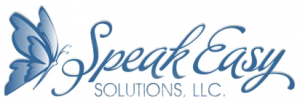Our areas of specialty include but are not limited to: articulation/phonology, assistive technology, apraxia of speech, oral motor, feeding, expressive/receptive language, auditory processing, phonemic awareness, fluency, voice disorders, sensory integration, Occupational Therapy, Physical Therapy, Behavioral Therapy, reading and spelling.
Speak Easy Solutions accepts most insurances. We also provide billing services as a courtesy to our clients.
We encourage our clients to contact their insurance companies prior to initiating an evaluation or establishing a therapy schedule to determine insurance coverage and reimbursement procedures.
All therapists are nationally certified and State of Florida Licensed therapists. Our Speech Therapists have received their Certificate of Clinical Competence from the American Speech Language Hearing Association (ASHA) or are obtaining their clinical fellowship under the guidance of one of our certified therapists.
Speak Easy Solutions offers group and individual therapy depending on the client’s needs.
Speak Easy Solutions provides therapy to individuals in our office or in their natural environment i.e. daycares, private schools, etc..
The evaluation process consists of parent/client interview, case history form, therapist observation and standardized testing. Therapists determine the frequency and duration of each therapy session and the appropriate course of therapy for each individual. Please contact us to schedule an evaluation with one of our qualified therapists.
The length of time an individual spends in therapy varies and depends on the individual’s specific needs and factors such as severity and type of disorder. Speak Easy Solutions will re-evaluate an individual to document progress and determine if a discharge is recommended every 6-12 months.
Speech is the sounds an individual makes and language is based on the concepts they know.
Please refer to speech milestones and language milestones. If your child is NOT doing some or all of the following for their age group please call us for a consultation.
 |
Sounds: M, N, H, P, F, W, T |
 |
Sounds: J (as in yellow), SH, K, D, B, G |
 |
Sounds: R, L |
 |
Sounds: S, CH |
 |
Sounds: TH (voiceless) as in thin V |
 |
Sounds: TH (voiced) as in the J (as in jack), Z |
| Receptive Language | Expressive Language | |
 |
|
|
 |
|
|
 |
|
|
 |
|
|
 |
|
|
 |
|
|
 |
|
 |
|
 |
|
 |
|
 |
|
 |
|
 |
|
 |
|
 |
|
 |
|
 |
|
 |
|
